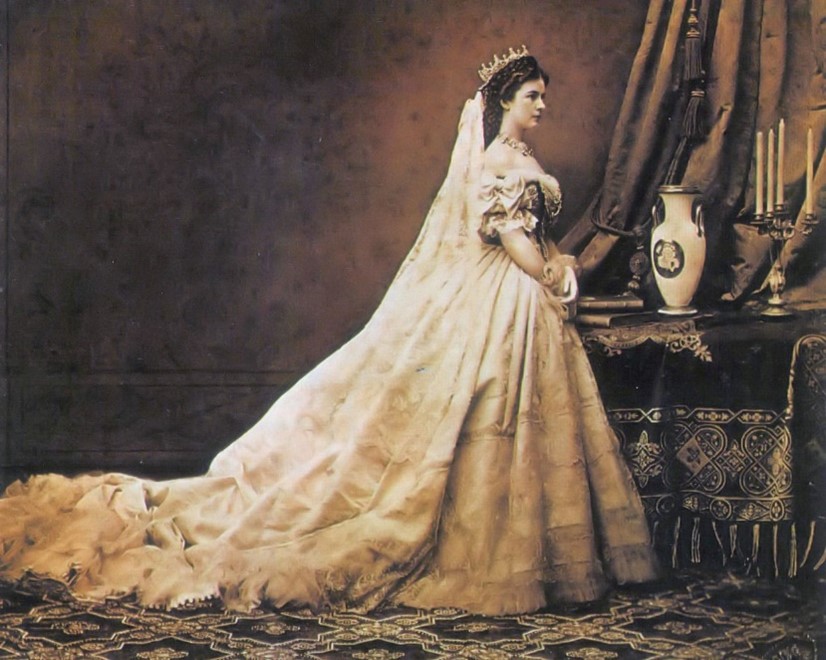In Godey’s Lady’s Book, 1849, this statement was printed: “ Custom has decided, from the earliest ages, that white is the most fitting hue, whatever may be the material. It is an emblem of the purity and innocence of girlhood, and the unsullied heart she now yields to the chosen one.”
Since Roman times, white has symbolized joy and purity. However, before the 19th century, women did not have specific wedding attire and would simply wear their finest dress on their wedding day. It wasn’t until the early 20th century that white became the preferred color for wedding dresses, starting with Queen Victoria of England, who wore an elegant white gown at her wedding. Her style was soon emulated by other brides in royal and upper-class societies, establishing white as a symbol of the bride’s beauty and sanctity.
In China, wedding attire is traditionally red, as red is considered an auspicious and celebratory color. Ancient Chinese brides often wore red wedding dresses and donned phoenix crowns. In traditional Chinese customs, the wedding dress was the most important garment a girl would wear in her lifetime, typically handcrafted by the girl from a young age until just before her marriage. This dress thus embodied all her youthful dreams. Although modern girls no longer sew their own wedding dresses, these garments are still custom-made and hand-sewn to highlight their preciousness and uniqueness.
While the peoples of ancient Sumer, Babylon, and Assyria celebrated romantic and erotic love in art and poetry, the question of marriage was far more transactional. Herodotus’s Histories tell of the Babylonian marriage market, where each year the marriageable young girls were brought before a crowd of men who bid for them, like slaves, based on their beauty. The “most beautiful” were chosen as wives for the wealthy, while the “ugliest” women who did not sell were given away to commoners along with monetary compensation for their upkeep, like problematic farm animals.
One can surmise that the women of Babylon’s marriage market were expected to look market-ready, so as to fetch the highest possible price (as well as, presumably, be sold into the most comfortable circumstances). Herodotus does not say what these women wore, but it’s likely that someone tried to make sure they looked their best, like apples shined up for display in the apple cart.
The history of the wedding dress reflects women’s aspirations for love, loyalty, and a better life, but it also highlights the transactional nature of marriage issues. In traditional Chinese marriage customs, a wedding dress signifies a girl receiving her partner’s faithful love and happiness, and even represents a necessary personal milestone, symbolizing a form of success. However, in relationships, people often weigh the pros and cons, and in the matchmaking market, individuals exchange like commodities; in romance, they may hurt each other over various issues, eventually separating. After such experiences, some might feel that the long train of the wedding dress, the constricting corset, the face-covering veil, and a relationship that sacrifices much only to end in hurt, are all forms of self-restriction and harm. A wedding dress is a beautiful garment, just a beautiful garment. Before falling in love with someone else, love yourself first; happiness is won by oneself, not given through marriage or another person. I hope one day, the wedding dress will not be just a “wedding” dress, and I can have the courage to leave an unhealthy relationship and fall in love with my unique self.
Reference material:
A natural history of the wedding dress – jstor daily. Available at: https://daily.jstor.org/a-natural-history-of-the-wedding-dress/ (Accessed: 30 April 2024).
History of the white wedding dress. Available at: https://web.archive.org/web/20051124170416/http://www.fromtimespast.com/wedding.htm (Accessed: 30 April 2024).
